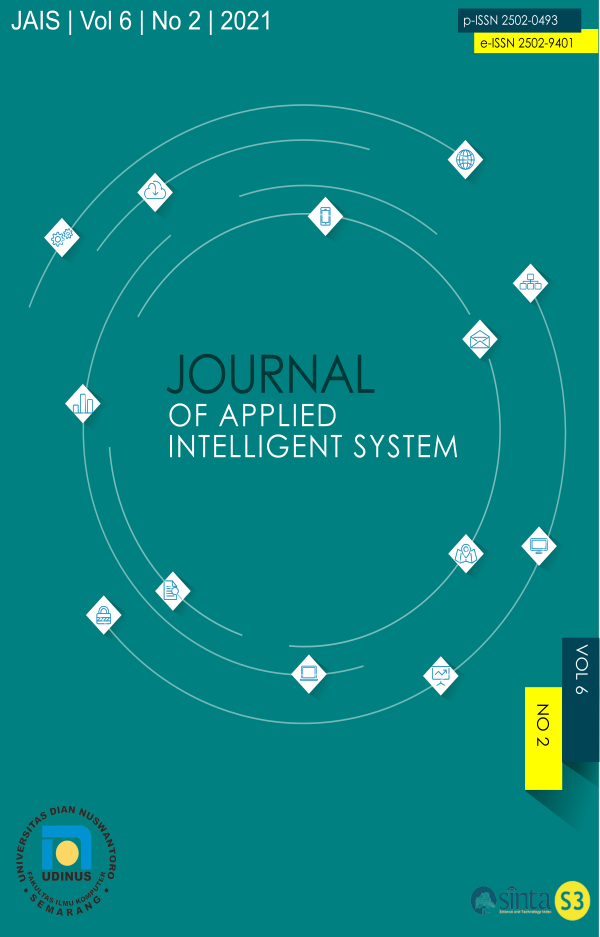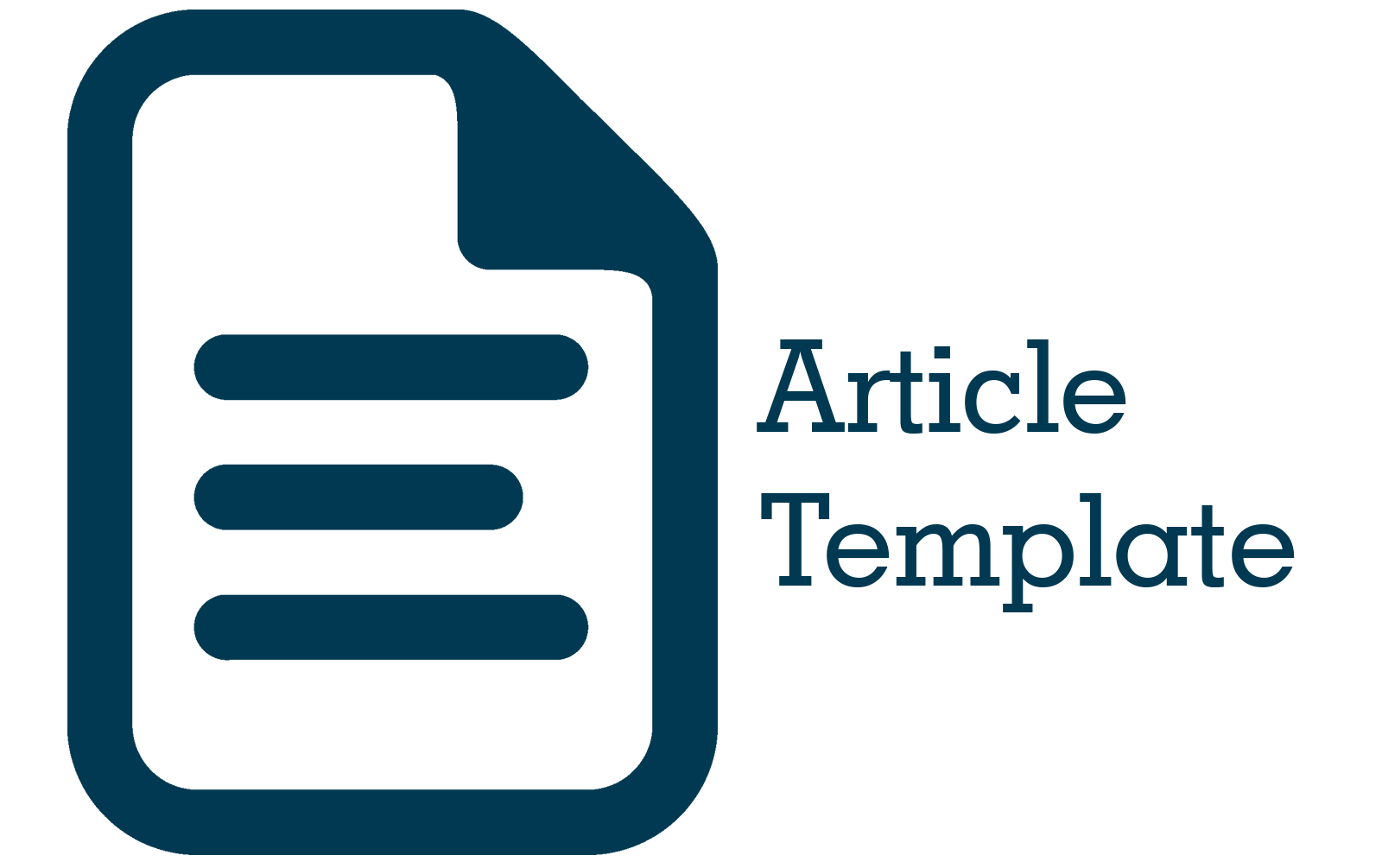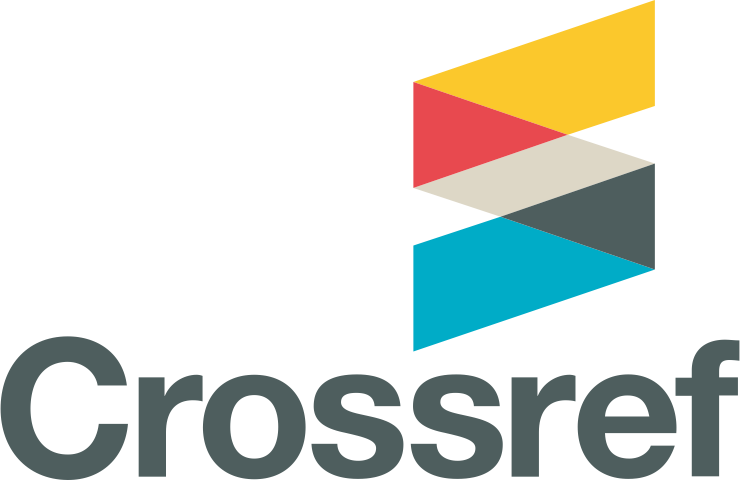Classification of Bird Based on Face Types Using Gray Level Co-Occurrence Matrix (GLCM) Feature Extraction Based on the k-Nearest Neighbor (K-NN) Algorithm
DOI:
https://doi.org/10.33633/jais.v6i2.4627Abstract
Indonesia is one of the countries with a large number of fauna wealth. Various types of fauna that exist are scattered throughout Indonesia. One type of fauna that is owned is a type of bird animal. Birds are often bred as pets because of their characteristic facial voice and body features. In this study, using the Gray Level Co-Occurrence Matrix (GLCM) based on the k-Nearest Neighbor (K-NN) algorithm. The data used in this study were 66 images which were divided into two, namely 55 training data and 11 testing data. The calculation of the feature value used in this study is based on the value of the GLCM feature extraction such as: contrast, correlation, energy, homogeneity and entropy which will later be calculated using the k-Nearest Neighbor (K-NN) algorithm and Eucliden Distance. From the results of the classification process using k-Nearest Neighbor (K-NN), it is found that the highest accuracy results lie at the value of K = 1 and at an degree of 0 ° of 54.54%.References
A. A. KRISANTI et al., “The diversity of diurnal bird species on western slope of Mount Lawu, Java, Indonesia,” Biodiversitas J. Biol. Divers., vol. 18, no. 3, pp. 1077–1083, Jul. 2017.
M. K. Riefani, M. A. Soendjoto, and A. M. Munir, “Short Communication: Bird species in the cement factory complex of Tarjun, South Kalimantan, Indonesia,” BIODIVERSITAS J. Biol. Divers., vol. 20, no. 2, pp. 537–543, 2019.
Flora & Fauna International, “Indonesia | Fauna & Flora International,” Flora & Fauna International, 2003. [Online]. Available: https://www.fauna-flora.org/countries/indonesia.
Profauna, “Facts about Indonesian Wildlife,” Protecting Forest & Wildlife. 2012.
H. J. Motlak and S. I. Hakeem, “Detection and classification of breast cancer based-on Terahertz imaging technique using artificial neural network & K-nearest neighbor algorithm,” Int. J. Appl. Eng. Res., vol. 12, no. 21, pp. 10661–10668, 2017.
O. R. Indriani, E. J. Kusuma, C. A. Sari, E. H. Rachmawanto, and D. R. I. M. Setiadi, “Tomatoes Classification Using K-NN Based on GLCM and HSV Color Space,” in International Conference on Innovative and Creative Information Technology (ICITech), 2017, pp. 1–6.
H. Nguyen-Quoc and V. T. Hoang, “Rice seed image classification based on HOG descriptor with missing values imputation,” Telkomnika (Telecommunication Comput. Electron. Control., vol. 18, no. 4, pp. 1897–1903, 2020.
E. Hari Rachmawanto, G. Rambu Anarqi, D. R. I. Moses Setiadi, and C. Atika Sari, “Handwriting Recognition Using Eccentricity and Metric Feature Extraction Based on K-Nearest Neighbors,” Proc. - 2018 Int. Semin. Appl. Technol. Inf. Commun. Creat. Technol. Hum. Life, iSemantic 2018, pp. 411–416, 2018.
N. D. A. Partiningsih, R. R. Fratama, C. A. Sari, D. R. I. M. Setiadi, and E. H. Rachmawanto, “Handwriting Ownership Recognition using Contrast Enhancement and LBP Feature Extraction based on KNN,” Proc. - 2018 5th Int. Conf. Inf. Technol. Comput. Electr. Eng. ICITACEE 2018, pp. 342–346, 2018.
F. Liantoni and H. Nugroho, “Klasifikasi Daun Herbal Menggunakan Metode Naïve Bayes Classifier Dan K- Nearest Neighbor,” Junral Simantec, vol. 5, no. 1, pp. 9–16, 2015.
N. Sulistianingsih, I. Soesanti, and R. Hartanto, “Classification of Batik Image using Grey Level Co-occurrence Matrix Feature Extraction and Correlation Based Feature Selection,” in 2018 International Seminar on Research of Information Technology and Intelligent Systems (ISRITI), 2018, pp. 492–497.
S. Winiarti, F. I. Indikawati, A. Oktaviana, and H. Yuliansyah, “Consumable Fish Classification Using k-Nearest Neighbor,” IOP Conf. Ser. Mater. Sci. Eng., vol. 821, no. 1, pp. 1–11, 2020.
S. A. Banday and A. H. Mir, “Statistical textural feature and deformable model based brain tumor segmentation and volume estimation,” Multimed. Tools Appl., vol. 76, no. 3, pp. 3809–3828, 2017.
S. A. Banday and A. H. Mir, “Statistical textural feature and deformable model based MR brain tumor segmentation,” 2016 Int. Conf. Adv. Comput. Commun. Informatics, ICACCI 2016, pp. 657–663, 2016.
K. Zhang, Y. Yan, P. Li, J. Jing, X. Liu, and Z. Wang, “Fabric Defect Detection Using Salience Metric for Color Dissimilarity and Positional Aggregation,” IEEE Access, vol. 6, pp. 49170–49181, 2018.
S. K. Mishra and V. H. Deepthi, “Brain image classification by the combination of different wavelet transforms and support vector machine classification,” J. Ambient Intell. Humaniz. Comput., no. 0123456789, Jul. 2020.
E. Abdel-Maksoud, M. Elmogy, and R. Al-Awadi, “Brain tumor segmentation based on a hybrid clustering technique,” Egypt. Informatics J., vol. 16, no. 1, pp. 71–81, 2015.
Y. Chen et al., “Variety identification of orchids using Fourier transform infrared spectroscopy combined with stacked sparse auto-encoder,” Molecules, vol. 24, no. 13, 2019.
L. Liu, P. Fieguth, G. Zhao, M. Pietikäinen, and D. Hu, “Extended local binary patterns for face recognition,” Inf. Sci. (Ny)., vol. 358–359, pp. 56–72, 2016.
S. N. H. Sheikh Abdullah et al., “Round Randomized Learning Vector Quantization for Brain Tumor Imaging,” Comput. Math. Methods Med., vol. 2016, pp. 1–19, 2016.
S. Das and S. Banerjee, “An Algorithm for Japanese Character Recognition,” Int. J. Image, Graph. Signal Process., vol. 7, no. 1, pp. 9–15, 2014.
D. M. Mahalakshmi and S. Sumathi, “Brain Tumour Segmentation Strategies Utilizing Mean Shift Clustering and Content Based Active Contour Segmentation,” ICTACT J. Image Video Process., vol. 9, no. 4, pp. 2002–2008, 2019.
Downloads
Published
Issue
Section
License
- Authors retain copyright and grant the journal right of first publication with the work simultaneously licensed under a Creative Commons Attribution License that allows others to share the work with an acknowledgment of the work's authorship and initial publication in this journal.
- Authors are able to enter into separate, additional contractual arrangements for the non-exclusive distribution of the journal's published version of the work (e.g., post it to an institutional repository or publish it in a book), with an acknowledgment of its initial publication in this journal.
- Authors are permitted and encouraged to post their work online (e.g., in institutional repositories or on their website) prior to and during the submission process, as it can lead to productive exchanges, as well as earlier and greater citation of published work (See The Effect of Open Access).









